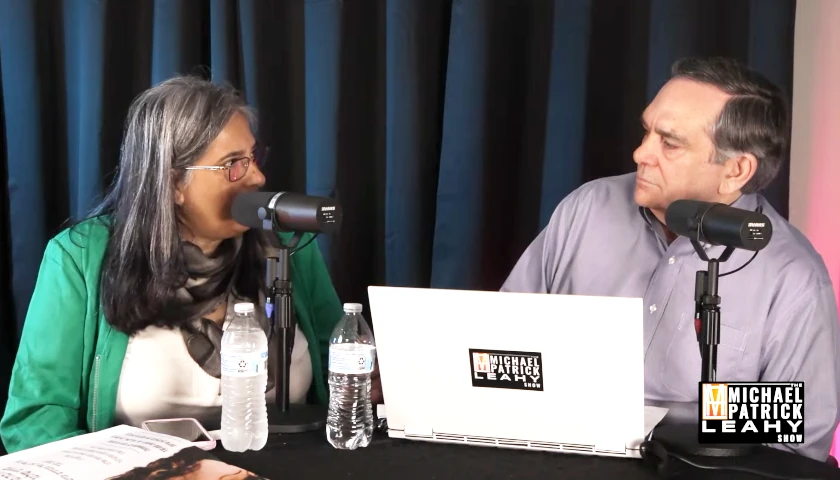Oshrit Sabag, a survivor of the October 7, 2023, terrorist attack on Israel, detailed the first bone-chilling minutes of the attack, which saw her and her children race to their safe room in their home after hearing warning sirens and explosions outside during an exclusive sit-down interview with The Michael Patrick Leahy Show on Thursday.
Sabag, who was born in Israel in a city outside Tel Aviv, moved to Kibbutz Nahal Oz – a small Israeli community located approximately 700 meters from Israel’s border with the Gaza strip – 23 years ago.
In addition to being a mother to an 11-year-old and 13-year-old, Sabag is a manager of education in her kibbutz while also being employed as an educator who teaches history and English to high school students at a school 10 minutes inland from the Israel-Gaza strip border.
On the day of the October 7 attack by Hamas terrorists, Sabag said she was awoken at 6:30 a.m. by air raid sirens and rocket fire in the kibbutz, which is a “communal settlement” in Israel.
Sabag said the house right behind hers was one of the first structures hit directly by rocket fire.
“The house right behind mine was, I think, the first to get hit by a rocket,” Sabag explained.
Sabag said the family house hit by rocket fire was able to survive the attack by taking shelter in the home’s bomb shelter, or safe room, which Sabag explained that every house in the kibbutz has.
“The family that lived there had time to run to the safe room. Because we are so close to the gaza strip border, we have something like four or five, six seconds to take shelter. Every house in the kibbutz has a bomb shelter attached to it. One of the bedrooms is a bomb shelter with iron shutters and concrete walls and everything, and most families let the children sleep there,” Sabag explained.
Sabag said her children sleep in the safe room located in her home, which, on October 7, was occupied by her family for 20 hours from the moment she heard the first air raid sirens and explosions that morning.
In regards to the air raid sirens and rocket fire in her kibbutz, Sabag said that while that type of activity is “common” in the region given its proximity to the Israel-Gaza border, she knew “very early” that the activity was different on the morning of October 7.
“Right at the beginning, we understood that this was different because when Hamas wants to fool around or just hassle you, it will shoot rockets to the fields to the outskirts of the kibbutz to our crop fields. But when they mean business, they will shoot straight to where people are living, to the neighborhoods. And that day, the rockets were very close,” Sabag explained.
Sabag said while she knew the activity was “different,” she didn’t fully understand what was going on outside until she turned on the television and saw armed Hamas terrorists “terrorizing” the streets of the border town Sderot.
“About 7 a.m., I turned the television on and we saw the city of Sderot… roaming with terrorists. People were on pickup trucks with machine guns and terrorizing the streets,” Sabag said.
While watching the terrorists taking over Sderot, Sabag said she thought to herself, “They’re here.”
“It was very hard to realize what was going on, but I live right at the center of the kibbutz and the attack started from the outskirts. They came in from the front and the back gate and they started from the outskirts of the kibbutz and they went inside. So it took them time to get to my neighborhood,” Sabag said.
“They were coming. They were there. We had over 120 terrorists in our kibbutz. We know that for a fact,” Sabag added.
Even after living in Kibbutz Nahal Oz during the October 7 attack and previous attacks by Hamas terrorists over the years, Sabag said she still does not own a firearm for protection, noting, “It’s not that common in Israel to have guns.”
“It’s not that common at all,” Sabag explained. “After October 7, the government made it easier to get a personal weapon but before that, it was very difficult to get one in Israel. Today, it’s still difficult, you cannot just get it. But since I live next to the border, I’m still thinking about it. My sister got one.”
Watch the full interview:
– – –
Kaitlin Housler is a reporter at The Tennessee Star and The Star News Network. Follow Kaitlin on X / Twitter.





